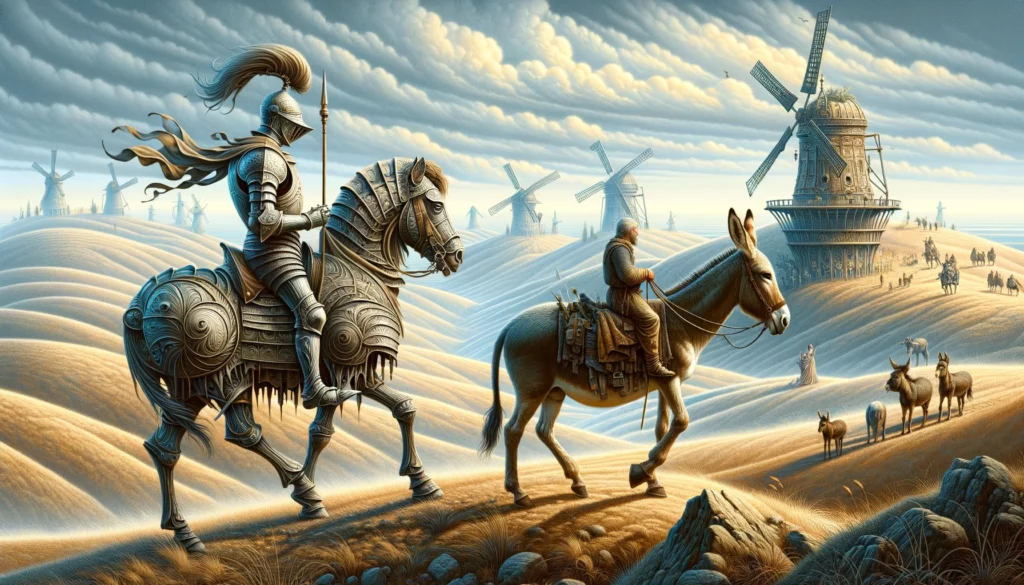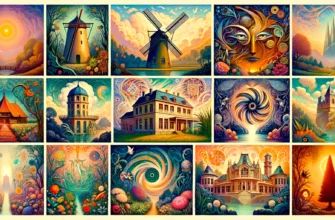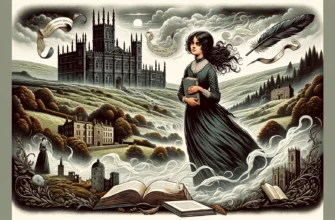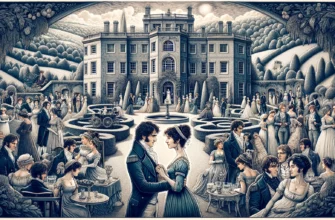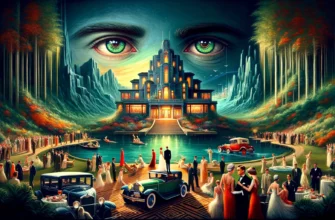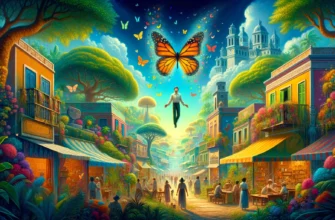The Genesis of “Don Quixote” and Its Author, Miguel de Cervantes
Miguel de Cervantes, born in 1547 in Alcalá de Henares, near Madrid, led a life as fascinating and varied as the characters in his novels. Before penning “Don Quixote,” Cervantes survived the Battle of Lepanto in 1571, sustained severe injuries, and spent five years as a captive in Algiers.
These experiences enriched his worldview and narrative style, providing a backdrop of realism and depth to his literary creations. Despite these hardships, or perhaps because of them, Cervantes’s humor and humanism were never far from the surface.
The socio-political landscape of late 16th and early 17th-century Spain was a tapestry of turmoil and transformation. The Spanish Empire’s declining power marked the era, as did the Inquisition’s stifling grip and profound cultural and intellectual shifts.
This turbulent period shaped Cervantes’s perspective and writings, leading him to question traditional values and norms through his work. “Don Quixote,” part one of which was published in 1605, emerged against this backdrop and was celebrated for its innovative narrative and profound satire.
“Don Quixote” quickly transcended its local roots to gain international renown. The novel’s ingenious structure, combining realism with fantasy and its exploration of universal themes such as the nature of truth, reality, and the human condition struck a chord with readers worldwide.
Its immediate success set the stage for the second part, published in 1615, ten years after the first. The publication of “Don Quixote” not only marked a significant milestone in Cervantes’s life but also heralded a new epoch in world literature, establishing the novel as a legitimate and rich literary form.
A Deep Dive into the Character of Don Quixote
Don Quixote, the titular character of Cervantes’s masterpiece, is a complex figure whose influence extends far beyond the pages of the novel. Born as Alonso Quixano, he is an aging gentleman from La Mancha who becomes so enthralled by chivalric romances that he decides to become a knight-errant.
Don Quixote’s transformation from a rational, albeit obsessed, individual to a knight driven by fanciful delusions provides a profound commentary on the ability of literature to affect the mind and perceptions of reality.
Cervantes masterfully crafts Don Quixote’s adventures, each episode revealing layers of his character while reflecting on the societal norms and literary conventions of the time. As Don Quixote embarks on his quests, his earnestness and noble intentions often clash with the world’s harsh realities, creating situations as tragic as they are comical.
This interplay between the ideal and the real forms the novel’s crux, inviting readers to ponder the fine line between sanity and madness and the power of illusion over reality.
Cervantes’s narrative techniques for depicting Don Quixote’s character are revolutionary. The novel’s use of metafiction, unreliable narrators, and interwoven stories blurs the boundaries between reality and fiction, mirroring the protagonist’s blurred perception of the world.
Through these methods, Cervantes not only crafts a compelling character in Don Quixote but also comments on the act of storytelling itself, making the novel a seminal work in the evolution of literary narrative.
Sancho Panza: The Loyal Squire and His Role
Sancho Panza, Don Quixote’s faithful squire, starkly contrasts his master in physique and mindset. A peasant from La Mancha, Sancho is earthy, practical, and deeply rooted in reality, providing a foil to Don Quixote’s lofty ideals and grandiose delusions.
Despite his common sense and frequent doubts about his master’s sanity, Sancho remains loyal, driven by the promise of an insula (island) to govern, and genuine affection and admiration for Don Quixote.
The relationship between Don Quixote and Sancho Panza is central to the novel’s narrative and thematic structure. Sancho’s pragmatism and Don Quixote’s idealism create a dynamic interplay rich in humor and depth.
As the story progresses, their relationship evolves, with each character influencing and learning from the other. Sancho, often the voice of reason, begins to see the world through Don Quixote’s eyes, while Don Quixote, in turn, is sometimes brought back to earth by Sancho’s grounded perspective.
Sancho’s role extends beyond that of a mere sidekick. His sayings, wisdom, and observations counter Don Quixote’s lofty discourse, offering insights into human nature and the social fabric of their world. Through Sancho, Cervantes explores themes of loyalty, ambition, and the nature of reality, enriching the novel’s narrative and philosophical depth.
The dynamic between the idealistic knight and his earthy squire becomes a vehicle for satire, reflection, and profound humanism, cementing their place as one of literature’s most memorable duos.
Themes and Literary Devices in “Don Quixote”
“Don Quixote” is celebrated for its rich tapestry of themes and literary devices that have resonated with readers and scholars alike. The novel is a poignant critique of the chivalric romances popular in Cervantes’s time, exposing the absurdities and impracticalities of their conventions.
This satire extends to a broader commentary on the conflict between reality and illusion, as the protagonist’s adventures blur the lines between the world as it is and as it is imagined.
The novel’s exploration of reality versus illusion delves into profound philosophical questions about the nature of truth, perception, and human existence. Don Quixote’s adventures raise questions about the constructs of reality, challenging readers to consider the power of imagination and the subjective nature of human experience.
This theme is further enriched by Cervantes’s use of metafiction and narrative framing, which invite readers to reflect on the act of storytelling and the relationship between the creator, the creation, and the audience.
Cervantes’s innovative narrative techniques, such as the unreliable narrator, the interplay between the author, the characters, and the reader, and the incorporation of various literary forms within the novel (including poems, tales, and dialogues), broke narrative structure.
These devices serve the novel’s thematic complexity and establish “Don Quixote” as a precursor to modern literary forms, influencing countless writers and revolutionizing the art of storytelling. The novel’s enduring legacy is a testament to its narrative brilliance and profound understanding of humanity, making it a cornerstone of world literature.
The Influence of “Don Quixote” on Literature and Popular Culture
“Don Quixote” has exerted a monumental influence on the trajectory of literature and popular culture, securing its place among the top-rated classic novels. The novel’s narrative techniques, character development, and thematic complexity have inspired many writers across centuries.
William Shakespeare, Gustave Flaubert, and Fyodor Dostoevsky, among others, have acknowledged the profound impact of Cervantes’s masterpiece on their work, citing its innovative narrative structure and psychological depth as major influences.
Beyond literature, “Don Quixote” has left an indelible mark on popular culture. The novel has been adapted into numerous forms, including operas, ballets, films, and plays, each interpreting the story through different artistic lenses.
Visual artists, too, have drawn inspiration from the novel’s rich imagery and themes. Works by painters such as Gustave Doré and Pablo Picasso showcase the lasting influence of Cervantes’s characters and narrative.
The universal themes and timeless appeal of “Don Quixote” have also led to its incorporation into educational curricula worldwide. The novel is appreciated for its literary merit and insights into the human condition, its critique of societal norms, and its exploration of the nature of reality and illusion.
The story of the knight-errant and his squire resonates with modern audiences, proving that the novel’s legacy transcends time and cultural boundaries.
Critical Reception and Interpretations of “Don Quixote”
The critical reception of “Don Quixote” has evolved significantly since its publication. Initially, the novel was perceived as a simple satire of the chivalric romances prevalent in Cervantes’s time. However, as centuries passed, scholars and readers began to recognize the deeper layers of meaning and the sophisticated narrative techniques employed by Cervantes.
Today, “Don Quixote” is hailed as a satirical work and a profound commentary on the human condition, the nature of reality, and the power of literature.
Various interpretations of “Don Quixote” have emerged over the years, reflecting the novel’s complexity and the diverse perspectives of its readers. Some view it as a tragic comedy, highlighting the poignant aspects of Don Quixote’s and Sancho Panza’s adventures.
Others interpret it as a social commentary, a critique of Cervantes’s society’s norms and values. Still, others see it as a philosophical discourse, delving into existential questions and the nature of truth and perception.
Scholarly debates surrounding the novel have focused on its structure, thematic intricacies, and the character of Don Quixote himself. Is he a hero or a fool, a visionary or a madman?
These questions have fueled extensive analysis and discussion, contributing to the novel’s status as a subject of enduring academic interest. The multitude of interpretations and the ongoing scholarly discourse attest to the richness of “Don Quixote” and its capacity to engage, challenge, and inspire readers and thinkers across generations.
“Don Quixote” in the Context of Spanish Golden Age Literature
“Don Quixote” is a standalone masterpiece and a pivotal work in Spanish Golden Age literature. This period, spanning the late 15th to the early 17th century, was marked by flourishing arts and literature, with Spain witnessing an unprecedented cultural renaissance. While unique in style and approach, Cervantes’s novel shares the Golden Age’s innovation characteristics, rich narrative, and a deep exploration of human nature.
While “Don Quixote” adheres to some of the conventions of its time, including the use of romance and satire, it also breaks new ground.
Cervantes’s novel diverges from contemporary works by delving into the psyche of its characters, experimenting with narrative form, and questioning societal and literary norms. In doing so, it reflects the cultural and intellectual currents of the Golden Age and shapes them, pushing the boundaries of what literature could achieve.
The novel’s significance in the Spanish literary canon cannot be overstated. It represents the zenith of Golden Age literature, encapsulating the era’s spirit while charting new territory in narrative art.
“Don Quixote” has become synonymous with Spanish cultural identity. It celebrates the nation’s literary heritage while offering a work that resonates globally. Its legacy is a testament to the enduring power of literature to reflect, critique, and enrich human experience.
